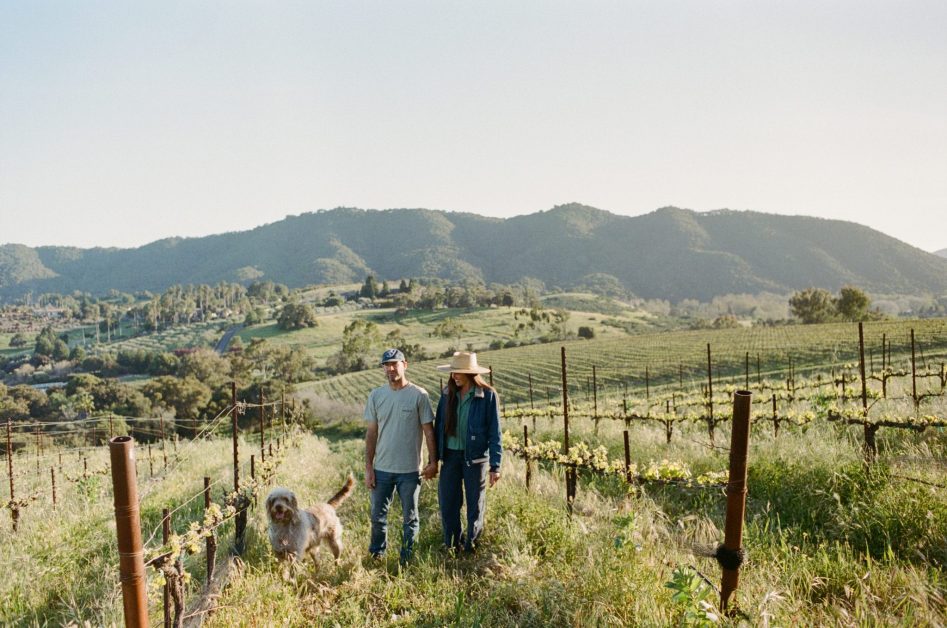The Central Coast AgLink (CCAL), recently launched by the Community Environmental Council, offers a model for connecting farmers and ranchers with technical, educational, and financial resources across San Luis Obispo, Santa Barbara, and Ventura Counties. While CalCAN was not directly involved in its creation, we see value in highlighting initiatives like CCAL that not only strengthen agricultural viability and community resilience but also provide valuable case studies that can help inform statewide policy efforts.
The Community Environmental Council (CEC) has launched Central Coast AgLink (CCAL), a free program that provides personalized support to farmers, ranchers, and land stewards for climate-smart practices on their land. CCAL’s goal is to reduce funding barriers for land stewardship projects, build regional agriculture networks, and accelerate climate resilience on California’s Central Coast.
The region supports a large amount of agriculture, and Santa Barbara and Ventura Counties are in the state’s top 10 producers. However, when it comes to receiving state and federal funding for climate-smart practices on working lands, the Central Coast is chronically underfunded. That’s why CCAL was created — to help Central Coast producers tap into funding, resources, and local communities to pursue climate-smart projects faster, easier, and more affordably.
“We have so much agriculture on the Central Coast, but funding rarely trickles into our region to support conservation land practices on farms and ranches. We want to change that,” said Bre Sliker, CEC Climate Projects Manager. “CCAL will connect producers with what they need to get a conservation project going — be it funding, technical knowledge, or partners. We hope this will remove barriers and build momentum in our region for land practices that benefit farmers, wildlife, and the climate.”
In just the first two weeks since its launch, CCAL has already received 15 sign-ups, demonstrating an appetite for conservation projects on working lands and a need for this service. When winemakers and grape farmers Gina and Mikey Giugni were approached by their long-time mentor about purchasing his vineyard property in Avila Beach, they knew it was a once-in-a-lifetime opportunity. The 112-acre parcel of rugged terrain included two wildlife corridors and three 10-acre vineyards that had been farmed organically for decades, providing an ideal foundation for the regenerative, climate-smart approach they had planned. But after spending every dollar they had to make their dream of land ownership come true, they needed help implementing their vision for the property. A regenerative farmer friend connected them with CEC.
CEC guided the Giugnis to apply for a Pollinator Habitat Program grant from the California Department of Food and Agriculture. With support from CEC’s team, Gina and Mikey received $60,000 to create pollinator meadows, install wildlife habitat, and plant hedgerows that support carbon sequestration, improve soil health, and save water.
“We have a responsibility to be good stewards of the land and appreciate CEC’s invaluable guidance and technical support to help ensure we’re protected from climate impacts,” said Gina Giugni, a farmer and winemaker in San Luis Obispo County.
In addition to helping farmers and ranchers directly, CCAL is also designed to expand the reach of existing organizations who provide a variety of agricultural services. CEC is working closely with Resource Conservation Districts (RCDs), nonprofits, and other service providers to amplify their efforts to ensure more producers are served.
“Producers have plenty of responsibilities to worry about — knowing how to navigate all of the available resources and partners doesn’t need to be one of them,” said Emily Nye, Conservation Agriculture Program Manager at Ventura County Resource Conservation District. “We see CEC’s Central Coast AgLink becoming a one-stop shop for farmers to learn about and connect to the region’s technical, educational, and financial resources. In collaborating with CEC on AgLink, Ventura County Resource Conservation District hopes to assist new producers, make regional ag resources easier to navigate, and increase adoption of on-farm conservation practices.”
To learn more and sign up, visit https://cecsb.org/central-coast-aglink or reach out to Bre Sliker at bsliker [at] cecmail.org.

 Mikey and Gina Giugni walk their Bassi Vineyard property in Avila Beach, where they have implemented climate-smart practices to create pollinator habitat, sequester carbon, and mitigate wildfire risk. Photo by Summer Staeb.
Mikey and Gina Giugni walk their Bassi Vineyard property in Avila Beach, where they have implemented climate-smart practices to create pollinator habitat, sequester carbon, and mitigate wildfire risk. Photo by Summer Staeb.